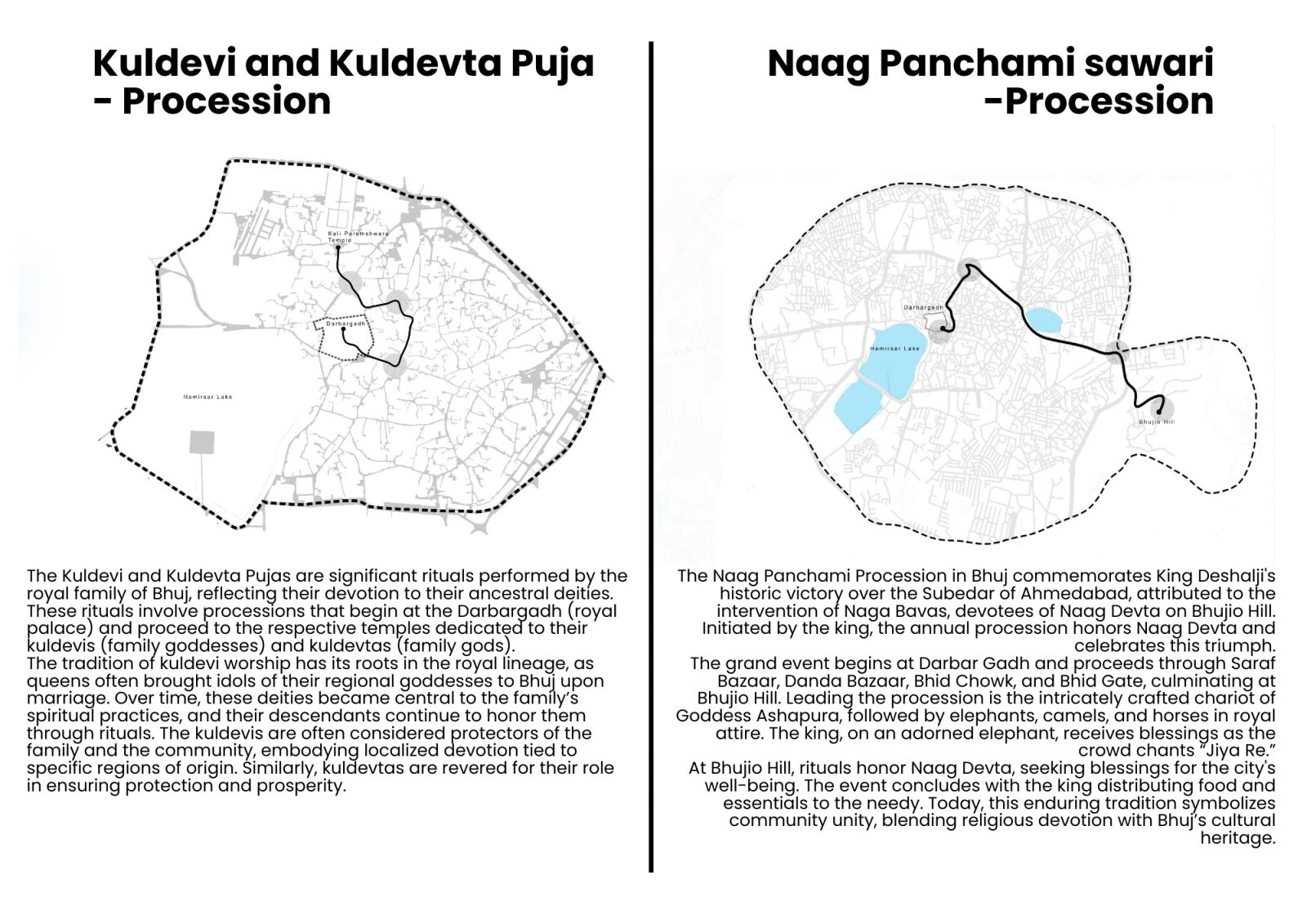Your browser is out-of-date!
For a richer surfing experience on our website, please update your browser. Update my browser now!
For a richer surfing experience on our website, please update your browser. Update my browser now!
The historical evolution of Indian cities is etched into their architecture and public spaces, shaped by layers of political power, economic activity, religion, and social communities. Bhuj, with its unique heritage, exemplifies this layered history, where built forms and symbols stand as testaments to past eras. These physical traces, while integral to preserving history, become truly meaningful when intertwined with lived experiences. This study explores how rituals and festivals in Bhuj function as dynamic conduits of memory, weaving together historical and communal identities through performative practices in urban spaces. Rituals, characterized by ceremonial acts, anchor collective memory by invoking associations with past events, places, and figures, while festivals—composed of processions, rites, and theatrical displays—establish a continuity between past and present. The processional festivals of Bhuj, which once commemorated the royal family and were solely observed by the public, have gradually transformed into participatory events organized by the people themselves. This shift in agency reflects a significant "change in power dynamics," transitioning from exclusive royal dominion to a more democratic cultural expression. Additionally, the 2001 earthquake reshaped Bhuj’s urban fabric and altered the traditional processional routes, prompting communities to adapt and reimagine their ritual landscapes. This study examines the evolving role of processional festivals in Bhuj, focusing on how shifts in power and natural disruptions influence the collective re-creation of history within the city’s public realm.
View Additional Work








